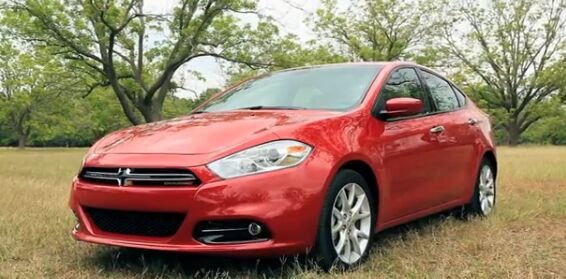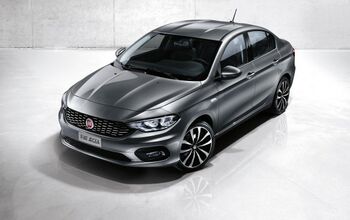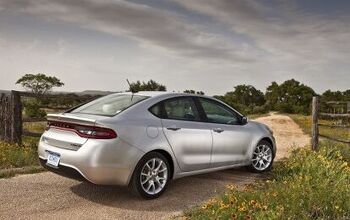In Defense Of: The Dodge Dart
The Dodge Dart was supposed to have been the Messianic Redemption for Chrysler’s passenger car side; a well-built, competent compact car that would draw in young buyers to the Dodge brand while taking the fight to established players like Civic, Corolla and Focus. It had all the right elements on paper too; a large cabin, Alfa Romeo underpinnings and the all-important 40 MPG rating.
Initial reviews were tepid and Chrysler got the model mix completely wrong. Reports of labor unrest, special 40 MPG compliant models and sleight-of-hand dealings between the government and Sergio Marchionne clouded the cars’d ebut. Many in the online peanut gallery were ready to brand the Dart a dud. How could Chrysler be so dense as to release a half-baked product into one of the most competitive segments in the industry?
I finally got a chance to drive the Dart, nearly a year after its on-sale date, and I came away very impressed. The demo I got was a mid-level SXT with boring 2.0L 4-cylinder and 6-speed automatic – not the most exciting drivetrain, but likely the most popular. This drivetrain combination was the biggest blight on the Dart. The 2.0L is an absolute dog, anemic and unresponsive to all but the most aggressive throttle inputs. When fighting urban traffic, it takes an eternity for the engine to wake up, and quick maneuvers are hampered by its total absence of gumption. The 6-speed automatic, oriented towards economy rather than performance, only makes things worse.
Aside from that, everything else was very well executed. The large touchscreen was easy to ready and UConnect is by far the best of Detroit’s infotainment systems. Its menus are clear and easy to use, the system operates without any lag and it quickly and seamlessly integrated my iPhone’s music library. It also passed my all important test: can a passenger who is unfamiliar with in-car technology operate it without any instruction from me.
On the road, the Dart is let down only by the godawful drivetrain. The steering is a tad numb but the weighting is spot on and you still have a good sense of what the front tires are doing. Personally, I think this car handles better than the over-rated Focus. Turn-in is crisp, body roll is fairly well controlled and it changes direction competently. Somehow, it feels lighted than its 3,200 lb curb weight suggests. I wouldn’t mind driving the 1.4T and 2.4 equipped models just for comparison.
Slowly but surely, sales of the Dart appear to be picking up. I’m sure that among the B&B, there will be squabbles about who rules the compact car segment. I don’t know if I would necessarily crown the Dart as my top pick (I would have to go with the Mazda3 and trade some refinement for superior driving dynamics) but I would be happy to recommend it to the 99.9% of the population that doesn’t care about whether a care has electric power steering or not.
More importantly, it’s a deeply encouraging sign for Chrysler. Their sales gain as a whole are largely being driven by Ram trucks and Jeep. The 200 and Avenger may offer a lot of value for money, but they are dated and rather dismal products compared to the competition. The 300 is a great car (as you’ll see next week) but the full-size segment is shrinking.
The Dart, on the other hand, is the first car built off the CUSW platform, which will underpin other crucial products like the Jeep Cherokee and the next generation Chrysler 200. If Chrysler is going to survive as a company, their next wave of products have to be more than just “competitive”. The Dart, despite its teething problems, is a very encouraging sign of what’s to come.
More by Derek Kreindler
Latest Car Reviews
Read moreLatest Product Reviews
Read moreRecent Comments
- Kjhkjlhkjhkljh kljhjkhjklhkjh A prelude is a bad idea. There is already Acura with all the weird sport trims. This will not make back it's R&D money.
- Analoggrotto I don't see a red car here, how blazing stupid are you people?
- Redapple2 Love the wheels
- Redapple2 Good luck to them. They used to make great cars. 510. 240Z, Sentra SE-R. Maxima. Frontier.
- Joe65688619 Under Ghosn they went through the same short-term bottom-line thinking that GM did in the 80s/90s, and they have not recovered say, to their heyday in the 50s and 60s in terms of market share and innovation. Poor design decisions (a CVT in their front-wheel drive "4-Door Sports Car", model overlap in a poorly performing segment (they never needed the Altima AND the Maxima...what they needed was one vehicle with different drivetrain, including hybrid, to compete with the Accord/Camry, and decontenting their vehicles: My 2012 QX56 (I know, not a Nissan, but the same holds for the Armada) had power rear windows in the cargo area that could vent, a glass hatch on the back door that could be opened separate from the whole liftgate (in such a tall vehicle, kinda essential if you have it in a garage and want to load the trunk without having to open the garage door to make room for the lift gate), a nice driver's side folding armrest, and a few other quality-of-life details absent from my 2018 QX80. In a competitive market this attention to detai is can be the differentiator that sell cars. Now they are caught in the middle of the market, competing more with Hyundai and Kia and selling discounted vehicles near the same price points, but losing money on them. They invested also invested a lot in niche platforms. The Leaf was one of the first full EVs, but never really evolved. They misjudged the market - luxury EVs are selling, small budget models not so much. Variable compression engines offering little in terms of real-world power or tech, let a lot of complexity that is leading to higher failure rates. Aside from the Z and GT-R (low volume models), not much forced induction (whether your a fan or not, look at what Honda did with the CR-V and Acura RDX - same chassis, slap a turbo on it, make it nicer inside, and now you can sell it as a semi-premium brand with higher markup). That said, I do believe they retain the technical and engineering capability to do far better. About time management realized they need to make smarter investments and understand their markets better.


































Comments
Join the conversation
I only have experience with one Dart but my co-worker has had a staggering number of issues in the first three months of ownership. As far as I can tell, this may be the worst of all available new cars.
The first Dart I saw was a Christmas market that's set up every year. One day, the Dart had replaced the usual Minis or Fiats that were being showcased. Curious, I walked up to see the sticker: more than $27,000! Okay, a loaded compact can be pricy. 1.4 turbo? Check. Leather? Um... I would expect a $27K compact to at least have some fake leatherette. I chuckled and walked away.